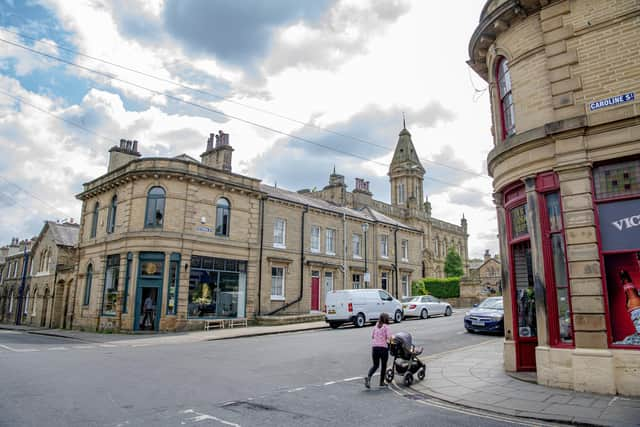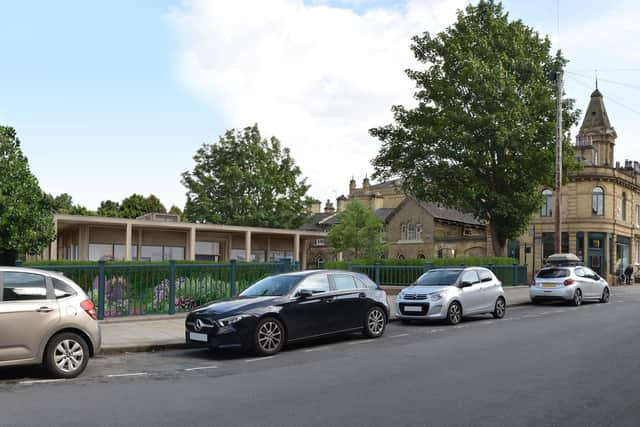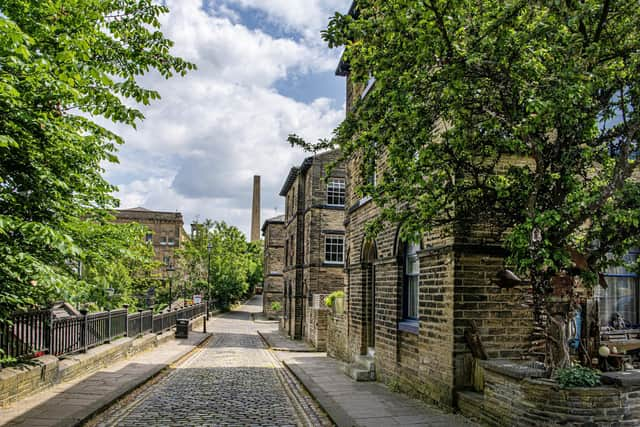Community centre with rooftop garden will be one of few new buildings allowed in Yorkshire mill village Saltaire since the 1850s - and built on the site of Sunday school
Strict planning rules mean that very few new buildings have been allowed in the mill village since it was first built by Sir Titus Salt for his Victorian workforce – and only a small number from the original street plan have been lost over the years.
One of these was the Sunday school for mill workers’ children, which was demolished in the 1970s – after which the site became a car park and public toilets. It has now been chosen as a brownfield location for the community arts, heritage and future technology centre, to be run jointly by Shipley College and the Saltaire Collection, the village’s archives and history project.
Advertisement
Hide AdAdvertisement
Hide AdBradford Council has released the land on the corner of Victoria Road and Caroline Street, where the Congregational Sunday School was built in 1876, one of the last facilities which Salt was personally responsible for before he died. The site had originally been intended for a hotel.


The new centre will have five classrooms for the college’s use, a large archive and exhibition space aimed at visitors, a civic garden and a rooftop exhibition garden.
The building has had to be carefully designed to blend in with the local context and enable views of Salts Mill to remain unimpeded.
Architect Jo Lintonbon, of Saltaire-based 3xa Design, said: “The new building reinstates a civic function where Saltaire’s now demolished Sunday school’s building once stood. It has been designed to complement the sensitive historic context of Saltaire without harming the heritage attributes that make up the World Heritage Site’s outstanding universal value.
Advertisement
Hide AdAdvertisement
Hide Ad“It will add to the ensemble of civic buildings and spaces on Victoria Road and create a welcoming and accessible exhibition pavilion and gardens. The design has been developed to retain key views to Salts Mill and most of the new accommodation is set below street level around a sunken courtyard.”


Saltaire Collection trustee Maggie Smith added: “Our collection provides a unique insight into the lives of Saltaire residents and workers since its foundation in 1853, covering the many dramas and changes from the village’s early days until today. We are so excited that, after many years of commitment from our marvellous volunteers and researchers, we will soon be able to share these stories with everyone.”
The current proposals also include new modern public toilets and changing facilities, which were a core requirement of Shipley Town Council.
Work is set to begin in June 2024. Civil engineering consultancy Dudleys were even able to view original Victorian plans of the old Sunday school to determine whether its basement posed a risk to the new development.
Advertisement
Hide AdAdvertisement
Hide AdOnly three of the buildings Salt provided for his workers’ physical and spiritual wellbeing no longer survive – the wash-house, which was never heavily used, was demolished at the end of the 19th century, and the deteriorating Methodist chapel replaced with new place of worship in 1971.The Midland Railway’s buildings at Saltaire Station were also lost when the line shut in the 1960s, and modern facilities had to be provided when it re-opened in the 1980s.


Other buildings have been converted for other uses, such as the school and workers’ canteen, now part of Shipley College, and the hospital and stables, now housing. Others, such as the Institute, have retained a purpose similar to their original.
